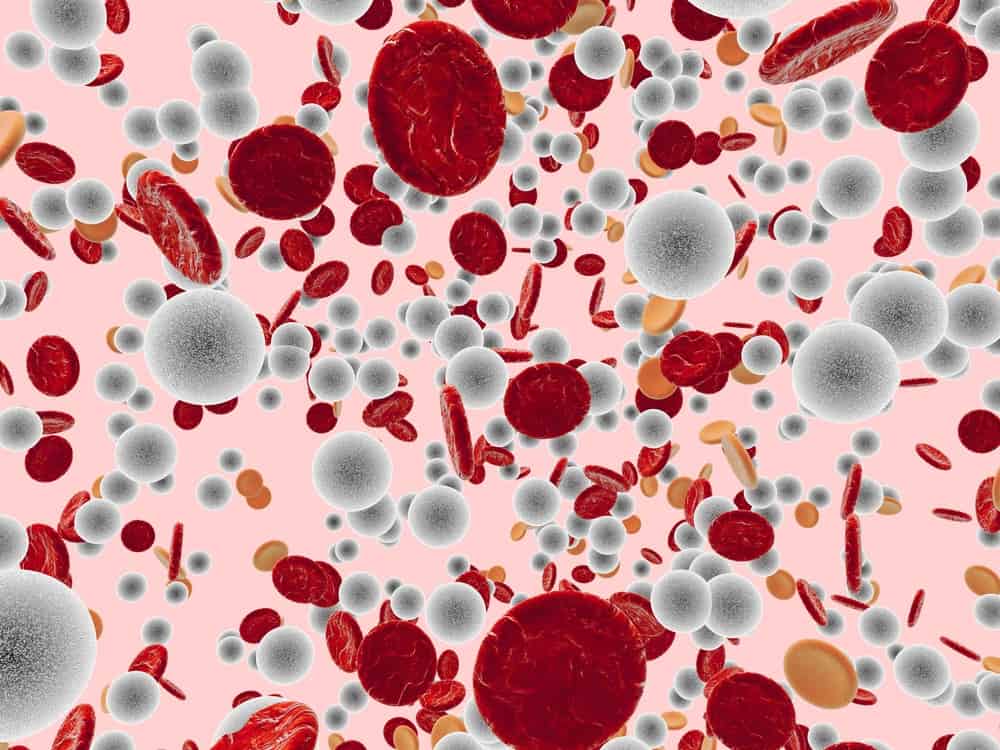Contents:
- Medical Video: Elevated Blood Cell Levels Medical Course
- What is platelets?
- Symptoms and signs if platelets are too low
- Low platelet causes
- Platelets that are trapped in the spleen
- There is a problem with the bone marrow
- Complications that occur if the platelets are too low
- 1. Excessive blood loss
- 2. Anemia
- 3. There is interference with the immune system
- 4. Severe complications
Medical Video: Elevated Blood Cell Levels Medical Course
Too low platelets are a blood disorder that has a prolonged effect. This condition is also called a name thrombocytopenia. This condition can have a mild to severe effect, depending on the cause.
For some people, symptoms can include severe bleeding and may be fatal if left untreated. Others may not experience any symptoms. Usually, low platelet counts are a result of certain medical conditions, such as leukemia, dengue fever, or consumption of certain drugs. Before knowing more about the dangers of platelets that are too low, see a review of what platelets are and what they do.
What is platelets?
Blood is formed from several types of cells. Platelets are one of the cells in the blood that function to stop bleeding. Platelets play a role in blood clotting and make the blood sticky so that it can form clots. So, if you get hurt, the blood doesn't keep flowing until it causes heavy bleeding.
When your body parts are bleeding, platelets swarm around the area and try to stop the flow. Therefore, you often see scratches on the outside and bruises on the inside of the injured body. If that happens, the platelet sign is working to do its function.
Normal platelet counts range from 140,000 to 450,000 platelets per microliter of blood. If the number shows below that standard, it is considered low and abnormal which indicates the possibility of a disease in the body.
Symptoms and signs if platelets are too low
Low platelet symptoms and signs usually only appear if platelet levels are very low. If the amount is only slightly reduced from the amount it should be, it usually does not cause any symptoms.
The following are some of the characteristics and symptoms that usually indicate platelets that are too low, including:
- The presence of purpura, or bruising on the skin is characterized by reddish, purple, or even brown.
- There is a rash with small dots usually red or purple called petechiae. Usually found in the lower leg
- Nosebleed
- Bleeding gums
- Bleeding from a wound that lasts for a long time and does not stop by itself
- Heavy bleeding during menstruation
- Bleeding from the rectum
- Fatigue
In more serious cases, you may experience internal bleeding. Signs of internal bleeding include:
- There is blood in the stool
- There is blood in the urine
- Vomit blood with very dark blood
Contact your doctor immediately if you experience the above signs. The doctor will usually do a blood test and take the necessary steps to avoid complications.
Low platelet causes
Platelets that are trapped in the spleen
The spleen is a small, fist-sized organ that is on the left side of your abdomen just below the rib cage. Usually, the spleen works to fight infection and filter out unwanted material from your blood. An enlarged spleen (which can be caused by a number of abnormalities) may contain too much platelets to cause a decrease in the number of circulating platelets.
There is a problem with the bone marrow
Bone marrow is a spongy tissue in the bone. That's where all the components of blood, including platelets are produced. If your bone marrow does not produce enough platelets, you will have a low platelet count. The causes include:
- Leukemia
- Anemia
- Viral infections such as hepatitis C or HIV
- Chemotherapy drugs and radiation exposure during chemotherapy
- Consume too much alcohol
- Vitamin B12 deficiency
- Lack of folate
- Iron deficiency
- Cirrhosis
- Leukemia
Complications that occur if the platelets are too low
Harmful bleeding can occur if your platelet count is below 10,000 platelets per microliter. The following are some of the complications that occur if the platelets are too low.
1. Excessive blood loss
If you have more severe cases of thrombocytopenia, you run the risk of experiencing excessive bruising and bleeding due to minor injuries. In fact, even small injuries can be life threatening. According to data from The Merck Manual Online Library, the risk of most serious bleeding occurs when platelets are under 10,000 microliters. If this happens, you run the risk of experiencing internal bleeding which allows blood loss through your digestive system.
2. Anemia
Low platelet counts can cause red blood cell counts to decrease. If the level of red blood cells in the body decreases, you risk experiencing anemia. Having anemia means your body doesn't get the oxygen it needs to function properly.
According to the National Anemia Action Council, some common symptoms of anemia include shortness of breath, headache, heart palpitations, fatigue, and coldness in the hands and feet. In some cases, anemia that occurs includes mild and transient. But some other chronic cases can cause disability and life threatening.
3. There is interference with the immune system
Low platelet counts can be the first signal of a compromised immune system. Infection such as human immunodeficiency virus or HIV can cause your platelet count to drop too low. Leukemia, which is cancer of the bone marrow, can cause your body to not produce enough platelets. In addition, many other conditions can destroy platelets or trap them so they don't work effectively.
4. Severe complications
Based on data from The National Heart, Lung, and Blood Institute, platelet counts that are too low will be life threatening if they cause bleeding in the brain. Although this is rare, some cases have occurred.
In most cases, severe thrombocytopenia can be treated if the main cause is controlled. For that, if you feel the symptoms of thrombocytopenia, immediately consult a doctor to avoid complications that might occur.












